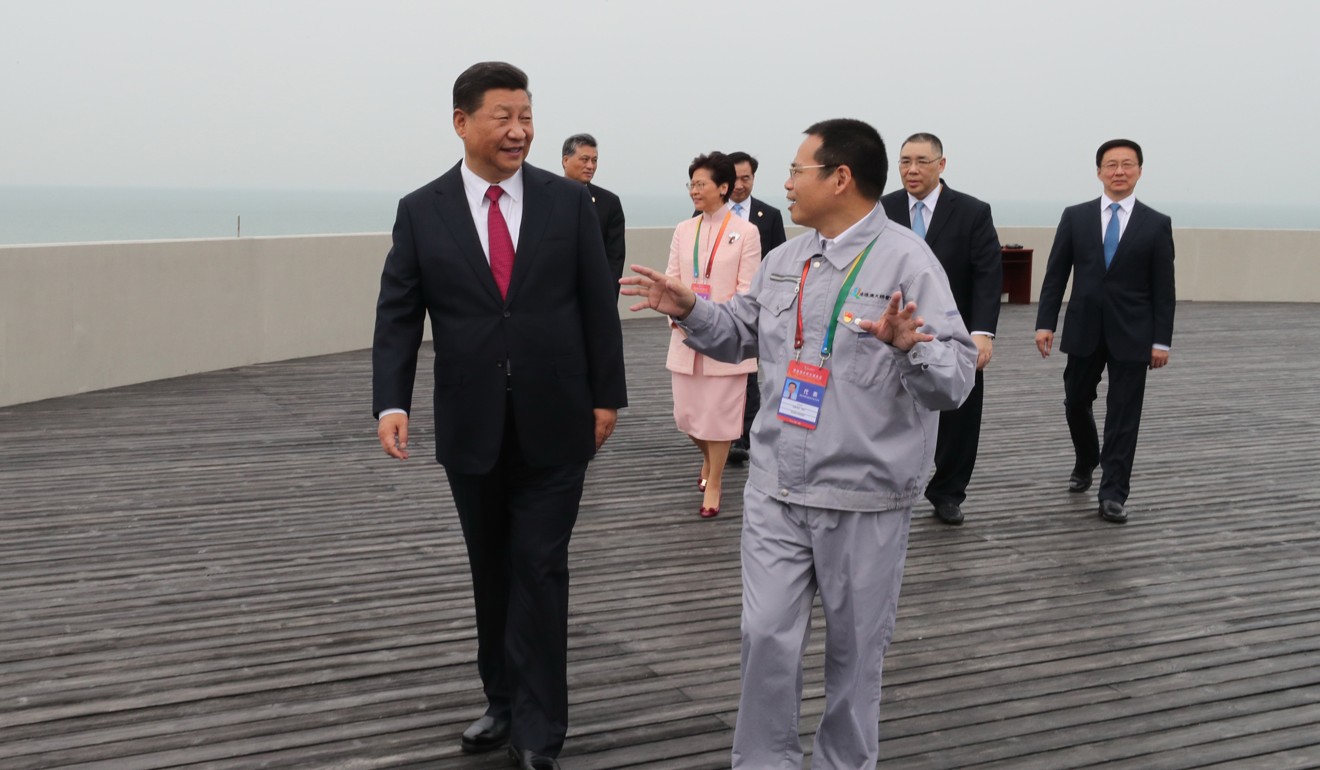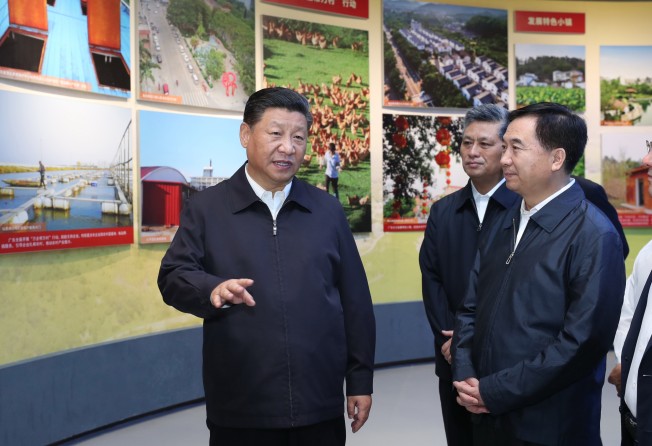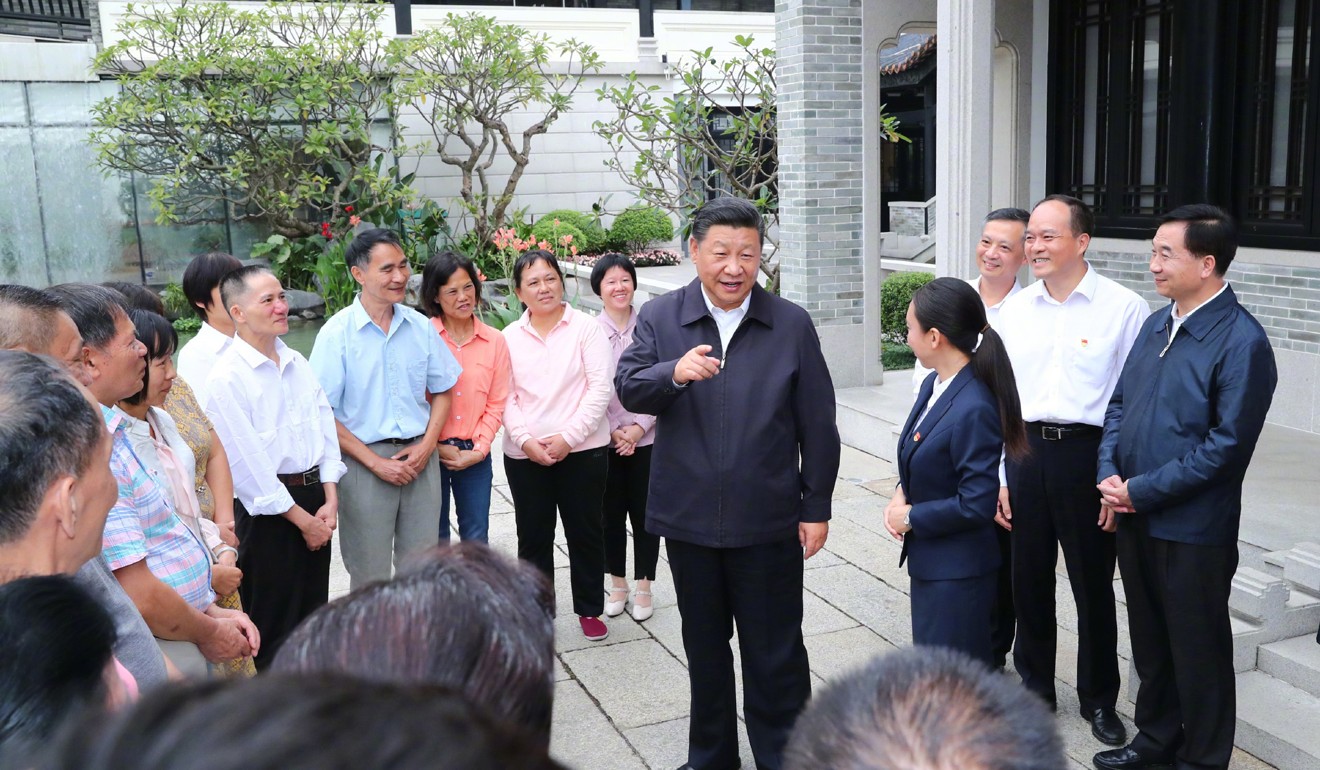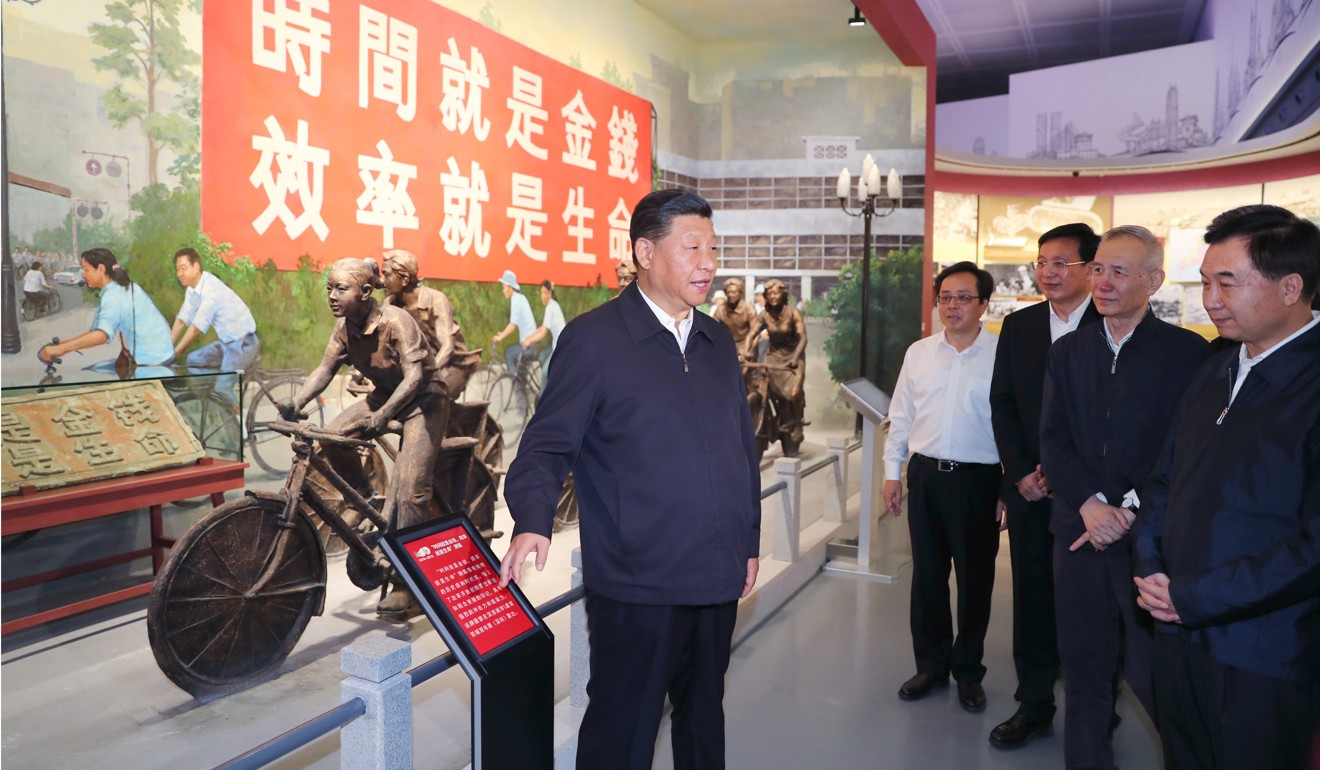
China’s Xi Jinping hails his free-trade zone policy as a milestone in country’s reform
- Leader’s endorsement of FTZ policy delivered at high-level forum to mark fifth anniversary of Shanghai free-trade zone
- Xi reassures the nation of Beijing’s commitment to opening up amid an ongoing trade war

Chinese President Xi Jinping reassured the nation of Beijing’s commitment to reform and opening up amid an escalating trade war with the United States, as he wrapped up his highly anticipated visit to Guangdong province on Wednesday.
Xi hailed his government’s free-trade zone (FTZ) policy as a “milestone” for a “new era” of reform in a message to a high-level forum marking the fifth anniversary of the opening of the country’s first FTZ in Shanghai.
Ahead of his tour of southern China, there had been hopes that the trip – held 40 years after the country embarked on its economic reforms – might provide some indication of new efforts to liberalise the economy and support an ailing private sector.
But while Xi visited two parts of the Guangdong free-trade zone – Hengqin in Zhuhai and Qianhai in Shenzhen, official reports provided no such news.

In contrast, at the Shanghai forum, which was attended by members of the party’s Politburo and featured heavily on the main evening news reports, Xi gave a glowing endorsement of the policy in absentia.
“The development of FTZs is a strategic move by the party’s central leadership to advance reform and opening up in the new era,” he was quoted as saying.
“It is a milestone during reform and opening up of our nation.”
China has 12 free-trade zones across the country, with the latest opening in Hainan in April.
The areas are intended as testing grounds for local authorities to experiment with policies to support businesses and attract foreign investment with fewer restrictions. Once tested and approved, the principles and ideas can be rolled out across the country or wherever they are deemed useful.

For instance, the concept of the “negative list” – which details sectors that are closed or only partially open to foreign investors – was first tested in the Shanghai free-trade zone but is now used in FTZs around China.
The introduction of the list means that in FTZs foreign investors no longer have to work their way through lengthy government approval procedures in sectors not covered by it.
Lin Jiang, a professor at Sun Yat-sen University in Guangzhou, said Xi’s visit to Hengqin and Qianhai was a “high affirmation” for the concept of free-trade zones.
“Although China’s FTZs have not been around that long, they could be the symbol of reform and opening up for the next 40 years,” he said.

In contrast, the special economic zones created by paramount leader Deng Xiaoping in the late 1970s as a way to trial controlled capitalism in a planned economy had become outdated, he said.
“Today, it is very hard for special economic zones to attract foreign investment with only favourable policies such as tax incentives and cheap rents,” he said. “Moreover, the cutthroat competition that exists between them can actually lead to the government losing tax revenue.”
Based in Shenzhen, which was now a thriving manufacturing hub for electronics and gadgets, meant Qianhai was perfectly placed as a testing ground for financial innovation, such as supply chain finance and finance leasing, Lin said.
While there was no indication of any new reforms during Xi’s trip, the choice of each of his destinations appeared to be loaded with meaning.

For example, his visit on Monday to a hi-tech industrial estate in Zhuhai and Gree Electric Appliances, a leading home appliances manufacturer, was likely meant to show his support for private entrepreneurs, many of whom have shifted their factories and wealth abroad out of fears of a deteriorating business climate and inadequate protection of private property.
Likewise, on Tuesday, Xi officiated at the opening of the Hong Kong-Zhuhai-Macau Bridge, which Beijing sees as an important vehicle for further integration in the Greater Bay Area.
And his visit to the impoverished backwaters of Yingde, where he pledged that “no one would be left behind”, was a clear reminder that fighting poverty would remain a top policy priority for Beijing.
On Wednesday afternoon, Xi also visited an old district of Guangzhou, the Guangdong capital, and inquired about cultural heritage protection works, after which he visited Jinan University, which was the first to welcome overseas students of Chinese descent after the country opened up to the West four decades ago.